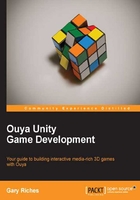
The early years
It started on January 25, 1947. The United States Patent and Trademark office received a request for a patent on an invention described as a cathode ray amusement device. The patent was granted on December 14, 1948 and, while it was never marketed or sold to the general public, it was truly one of the first video games. The machine was a crude electromechanical device that did not use any memory or programming.
In the early 1950s, simple computer programs started to surface but they lacked interactivity, and with the limited accessibility of computers they would not be seen by many and were destined to be forgotten.
It wasn't until the 1970s that arcade machines as we know them came about. Nolan Bushnell and Ted Dabney created a coin-operated game named Computer Space. Nutting Associates bought the game and produced over 1,500 arcade machines. Computer Space had a steep learning curve, and because of this was unsuccessful, but it must still be remembered for being the first mass-produced video game offered for general sale.
Bushnell and Dabney went on to establish Atari in 1972 and assigned one of their employees, Allen Alcorn, with a training exercise. During that exercise, he created Pong, the virtual table tennis game we all know and love. Bushnell and Dabney were impressed with Alcorn's work and they decided to manufacture the game. Overall, Atari sold approximately 19,000 pong machines.
Creating a machine that could play a game was all well and good, but innovators were looking towards the future. What if a machine could play multiple games? This would truly give it the edge over its single-game relatives. Ralph Baer had begun work on such a machine in the late 1960s. He was demoing it in the early 1970s to companies including Sylvania, Sears, Magnavox, and General Electric. Magnavox licensed the system and produced the first video-game console in the world, the Magnavox Odyssey console. This console used cartridges containing jumpers that would alter the circuitry logic of the machine. A multigame device coupled with a strong marketing push meant that Magnavox sold over 100,000 Odyssey consoles in their first year. Over the lifetime of the console, the Odyssey console sold over 2,000,000 units.